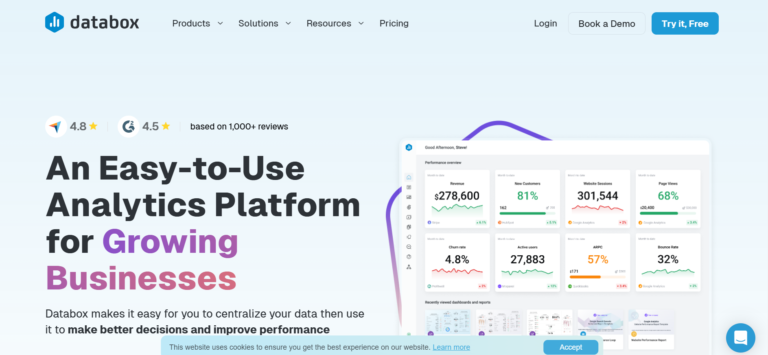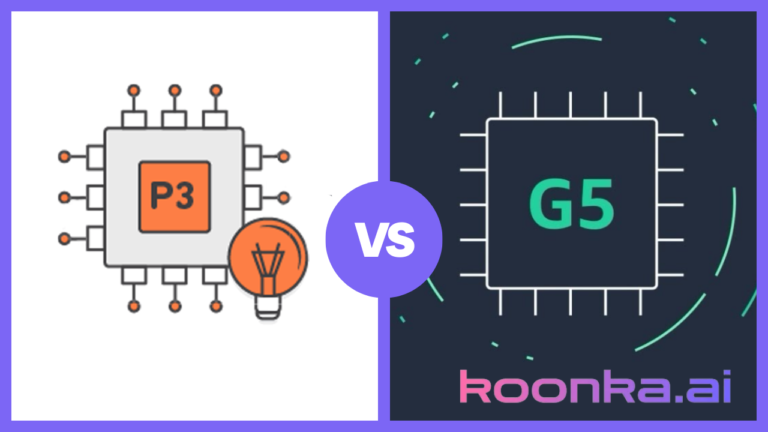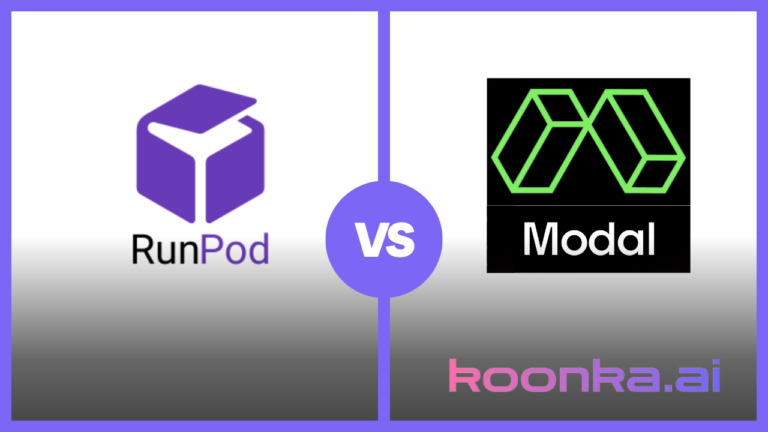CoreWeave vs Lambda Labs: Which Cloud GPU Provider Offers the Best Value?

When it comes to cloud GPU providers, CoreWeave and Lambda Labs are two names that often come up in conversations about AI, machine learning, and other GPU-accelerated workloads. Both providers offer high-performance NVIDIA GPUs, but they cater to different needs and use cases. CoreWeave focuses on enterprise-scale workloads with a Kubernetes-native infrastructure, while Lambda Labs emphasizes accessibility and flexibility with on-demand GPU clusters.
In this CoreWeave vs Lambda Labs comparison, we’ll go across key areas like pricing, performance, and scalability to help you decide which provider is best suited for your GPU-intensive projects. Whether you’re training AI models, rendering VFX, or working on generative AI, this comparison will give you the insights you need to make an informed choice.
Affiliate Disclosure
We prioritize transparency with our readers. If you purchase through our affiliate links, we may earn a commission at no additional cost to you. These commissions enable us to provide independent, high-quality content to our readers. We only recommend products and services that we personally use or have thoroughly researched and believe will add value to our audience.
Table of Contents
GPU Cloud Services:
When considering GPU cloud services, CoreWeave and Lambda Labs are two notable contenders. Both companies offer robust computing infrastructure tailored for AI, machine learning, and other GPU-accelerated workloads. This comparison will highlight the key offerings, pricing, and advantages of both services to help you make an informed choice.
Experience top-tier performance with CUDO Computes’ dedicated solutions and sign up today to start optimizing your projects!
For more information about their services, please watch this short video:
1. GPU Models and Pricing
CoreWeave
CoreWeave boasts a diverse lineup of Nvidia chips aimed at various use cases, from Generative AI workloads to high-performance computing (HPC). Here’s a breakdown of their GPU offerings:
- NVIDIA HGX H100 & HGX H200: Designed for large-scale AI workloads, these GPUs are at the forefront of AI cloud computing. The HGX H100 is seven times more efficient in HPC applications and up to nine times faster for AI training compared to previous generations. The HGX H200 further advances Generative AI training, offering 5.5x faster fine-tuning compared to the H100. Pricing starts at $2.23 per hour.
- NVIDIA Blackwell Architecture (B200 & GB200 NVL72): The B200 offers 15x faster real-time inference and 3x faster training compared to the previous generation. The GB200 NVL72 takes it a step further, offering up to 30x faster real-time LLM performance, making it a strong candidate for Large Language Models (LLMs).
- Other GPUs: CoreWeave offers a wide array of GPUs such as the A100, A40, A5000, and RTX 6000, providing options starting at $0.24 per hour.
Lambda Labs
Lambda Labs is another strong contender in the GPU cloud market, offering a range of Nvidia chips optimized for AI workloads:
- NVIDIA H100: Lambda Labs was one of the first cloud services to offer H100 GPUs on demand. The H100 features 80GB of HBM3 memory and is deployed in HGX 8-GPU nodes, starting at $2.49 per hour.
- NVIDIA A100 & A6000: With more affordable options, Lambda offers A100 GPUs at $1.29 per hour and A6000 GPUs at $0.80 per hour. These GPUs are ideal for smaller-scale AI and machine-learning tasks.
- NVIDIA B200 & H200: These top-tier GPUs are also available for reservation, providing substantial performance for large-scale AI models and data processing. Pricing for these models is available upon request.
Key Takeaway: If you’re seeking cutting-edge performance with options like the HGX H200 and B200 NVL72, CoreWeave stands out. However, if you’re looking for a more flexible pricing model with immediate access to a wide range of GPUs, Lambda Labs provides competitive pricing and ease of use.
2. Use Cases and Workload Optimization
CoreWeave
CoreWeave’s platform is purpose-built for a variety of demanding workloads:
- Model Training: CoreWeave’s distributed training clusters leverage Nvidia’s H100 and A100 GPUs, optimized for deep learning at scale. Their GPUDirect InfiniBand networking ensures minimal latency, crucial for training large models like GPT-3.
- Rendering: The flexibility of CoreWeave’s infrastructure allows for highly configurable GPU instances that can be scaled up or down based on rendering needs. Popular GPUs for this use case include the A40 and A4000, making CoreWeave a go-to solution for studios dealing with tight deadlines.
- Virtual Workstations: Offering virtual workstations with RTX and A-series GPUs, CoreWeave provides a seamless experience for graphic-intensive workloads. This is ideal for businesses looking to offload on-prem infrastructure while maintaining high performance.
Lambda Labs
Lambda Labs offers a versatile GPU cloud platform that’s particularly appealing for AI engineers:
- Large Language Models (LLMs): Lambda’s infrastructure supports a range of transformer models, including GPT, BERT, and Llama. With access to high-performance GPUs like the H100, Lambda is a top choice for training and fine-tuning large AI models.
- Multi-GPU Instances: Lambda allows for multi-GPU configurations, enabling users to scale their workloads based on budget and performance needs. Whether you’re training models across 8 GPUs or just 1, Lambda’s flexibility stands out.
- API Integration: Lambda Cloud offers an API that allows developers to easily launch and manage GPU instances, making it a strong option for teams that need to automate their workflows.
Key Takeaway: CoreWeave is an excellent choice for enterprises needing specialized configurations for tasks like model training and rendering. Lambda Labs shines with its flexibility and ease of use, making it a strong contender for developers working on Generative AI workloads and other AI-driven projects.
Unlock the potential of high-performance computing by signing up for CUDO Compute, and power your next big project!
3. Networking and Storage Solutions
CoreWeave
One of CoreWeave’s standout features is its NVIDIA InfiniBand NDR networking. This provides non-blocking communication, ensuring that data moves quickly between GPUs during intensive workloads like AI training. CoreWeave’s infrastructure is designed for large-scale distributed training, with no bottlenecks, making it an excellent choice for those who need high throughput.
Additionally, CoreWeave offers flexible storage solutions, including All NVMe, HDD, and Object Storage options. Their high IOPS per Volume and zero ingress or egress fees make them a cost-effective option for handling large datasets.
Lambda Labs
Lambda Labs also offers a robust networking and storage setup designed specifically for AI workloads. Their HGX H100 and B200 GPUs are deployed with 3200 Gbps of bandwidth, ensuring that your models can train quickly and efficiently. Lambda’s storage solutions include 30 TB of local storage per 8x H100, offering ample space for large datasets.
Key Takeaway: If network performance is critical to your workloads, CoreWeave’s use of NVIDIA InfiniBand gives it a significant edge. However, Lambda Labs provides a solid alternative with competitive storage and networking features.
4. Availability and Scalability
CoreWeave
CoreWeave’s infrastructure is built for real-time, on-demand scaling. With their broad selection of GPUs, you can right-size your workload based on your performance and cost requirements. Whether you’re running a small-scale project or need a supercomputer-level setup, CoreWeave’s scalable infrastructure can handle it.
Additionally, CoreWeave offers reserved capacity for those who need guaranteed access to high-performance GPUs, particularly during periods of GPU shortage.
Lambda Labs
Lambda Labs offers a highly scalable platform with on-demand GPU clusters ranging from 16 to 512 GPUs. Their self-serve model allows you to skip quotas and sales meetings, providing immediate access to computing power. For long-term projects, Lambda also offers reserved instances with discounts of up to 45%.
Key Takeaway: CoreWeave excels in large-scale, on-demand scalability with real-time provisioning. Lambda Labs offers a more straightforward self-serve model, ideal for developers and teams needing quick access to GPU resources.
Need scalable cloud solutions? Sign up for CUDO Compute now and elevate your infrastructure to the next level!
5. Ecosystem and Support
CoreWeave
CoreWeave offers extensive support for Kubernetes, making it easier to manage your resources across different environments. Their infrastructure is highly configurable, with support for both containers and virtual servers. Additionally, CoreWeave provides deployment support and tools like Determined.AI and SLURM at no extra cost, which can be a significant advantage for businesses unfamiliar with on-prem deployments.
Lambda Labs
Lambda Labs focuses on making the developer experience as seamless as possible. Their platform is pre-configured with popular machine learning frameworks like TensorFlow, PyTorch, and CUDA, allowing users to get started quickly. They also offer one-click Jupyter access, making it easy to connect to your GPU instances directly from your browser.
Key Takeaway: If you need a high level of configuration and deployment support, CoreWeave is the better choice. Lambda Labs offers an easier onboarding experience, ideal for developers who want to focus on building models without worrying about the infrastructure.
Which GPU Service is Right for You?
When it comes to GPU cloud services, both CoreWeave and Lambda Labs offer compelling solutions, each with its unique strengths.
CoreWeave stands out for its advanced Nvidia chips, real-time scalability, and networking performance, making it the ideal choice for enterprises and businesses dealing with complex, large-scale AI workloads. Their flexible storage solutions and bare-metal Kubernetes approach further enhance their appeal for demanding applications.
Lambda Labs, on the other hand, provides a more developer-friendly platform with transparent pricing and instant access to GPU clusters. Their self-serve model and multi-GPU instances make them a great option for teams working on Generative AI workloads and other AI cloud projects.
Ultimately, your choice between these two options will depend on your specific needs—whether you prioritize cutting-edge performance, flexible pricing, or ease of use.
In a GPU market with rapid growth where GPU shortages are becoming a concern, both companies are great alternatives to tech giants like Google Cloud and Microsoft Azure and are well-positioned to help you harness the power of Nvidia chips and stay ahead in the race to deploy AI workloads.
Optimize your workload with CUDO Compute’ advanced cloud solutions. Sign up today and see the difference!
CoreWeave vs Lambda Labs: Data Centers:
When evaluating CoreWeave and Lambda’s data centers, both services present robust options for GPU-driven workloads, but they cater to different needs and have unique strengths.
CoreWeave
CoreWeave focuses on delivering accelerated cloud services that are particularly well-suited for compute-intensive tasks, such as those required by CGI and AI/ML markets. With a fleet of over 45,000 GPUs across five data centers in North America (Chicago, North Carolina, New Jersey, and New York), CoreWeave positions itself as a major player in the GPU cloud space. What sets CoreWeave apart is its ability to offer both raw compute power at scale and managed Kubernetes services, making it a versatile option for users who need scalable, application-agnostic infrastructure.
One of CoreWeave’s key advantages is its pricing. CoreWeave claims to be up to 80% more cost-effective than major cloud providers. This is achieved through appropriately priced compute resources, efficient infrastructure, and usage-based billing. For those looking to maximize performance while optimizing costs, CoreWeave’s offerings could be highly appealing. Additionally, CoreWeave’s bare-metal instances offer industry-leading spin-up times, with new instances launching 35 times faster than on traditional virtual machines. This could be a significant advantage for users who need to quickly scale their compute resources.
CoreWeave is also an NVIDIA Cloud Service Provider Partner, meaning their data centers are equipped with top-tier NVIDIA GPUs, including the V100 and Quadro RTX Series. This extensive selection allows users to match their computing resources with the complexity of their projects, avoiding the need to overpay for more power than required.
Join CUDO Compute today and experience premium cloud services that can handle all your needs!
Lambda Labs:
Lambda, on the other hand, excels in offering AI-ready data centers designed for hosting NVIDIA DGX systems. Lambda’s data centers are equipped with NVIDIA’s latest DGX B200 and SuperPOD systems, featuring the new Blackwell GPUs, which are optimized for large language model inference and training. Lambda’s data centers also support the older but still powerful NVIDIA H100 GPUs, offering a range of options depending on the user’s needs.
A significant advantage of Lambda is its focus on lifecycle management. Lambda ensures that users always have access to the latest NVIDIA architectures, helping them avoid being locked into outdated hardware. This is particularly important for organizations that need to stay on the cutting edge of AI and ML development.
Lambda’s data centers are also designed with flexibility in mind. Users can choose between hosting their systems in Lambda’s secure data halls or deploying them on-premises in their own data centers. This level of control can be a major benefit for organizations that require specific security or compliance measures. Lambda also offers colocation services, which allow users to deploy their machine learning infrastructure in a Tier 3 data center, complete with state-of-the-art cooling and redundant power to ensure high availability.
Both CoreWeave and Lambda have strong support systems in place. CoreWeave integrates its engineers with clients’ DevOps teams, providing continuous support throughout the lifecycle of their projects. Lambda offers premium support with extended warranties, live technical assistance from ML engineers, and support for popular machine learning frameworks like PyTorch and TensorFlow.
CoreWeave is an excellent choice for users seeking cost-effective, scalable GPU cloud services with rapid deployment capabilities. It’s particularly suited for those who need a flexible, application-agnostic infrastructure. On the other hand, Lambda stands out for its AI-focused offerings, lifecycle management services, and flexibility in deployment. Organizations looking to stay on the cutting edge of AI and ML development, with a preference for NVIDIA’s latest technology, may find Lambda to be the better fit. Ultimately, the choice between CoreWeave and Lambda will depend on the specific needs of your projects and the level of control and support required.
CoreWeave vs Lambda Labs: Conclusion
CoreWeave edges out as the stronger option for users seeking advanced, enterprise-grade performance and scalability, particularly in large-scale AI, machine learning, and rendering workloads. Its focus on cutting-edge NVIDIA GPUs, real-time scalability, and industry-leading networking performance makes it ideal for businesses requiring top-tier infrastructure and flexibility.
While Lambda Labs offers a user-friendly, developer-centric experience with competitive pricing and immediate access to GPU clusters, CoreWeave’s superior hardware options, storage solutions, and Kubernetes-native infrastructure provide a more comprehensive solution for complex, demanding applications. If your projects require high performance, scalability, and advanced networking, CoreWeave is likely the better choice to meet your needs.
Ready to supercharge your projects? Sign up for CUDO Compute and take advantage of their powerful servers!







